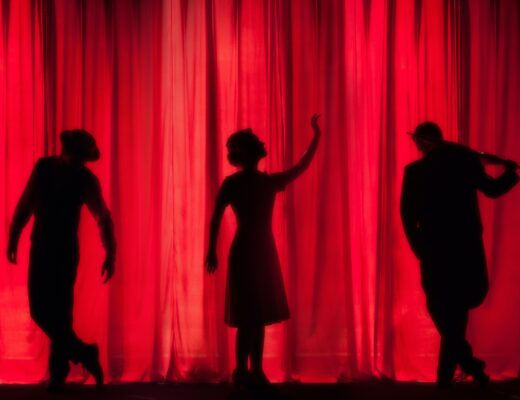Continuing the spooky season this week, I wanted to look at one of my favorite performances, the original alien or Xenomorph from Ridley Scott’s 1979 classic, Alien.
After landing in theaters only two years after Star Wars: A New Hope, the Alien franchise continues to grow, diving deeper into the mythology, and expanding the universe and fandom.
But for me, nothing beats the original creature that burst from Kane’s (John Hurt’s) chest, giving birth to a new type of sci-fi horror.
Real quick: for last week’s spooky character movement study, check out How Bone-Breaking Gave Us a New Zombie.
If you want more character movement studies that are also rather spoopy, check these out: NBC Hannibals Red Dragon, Angelica Huston’s Morticia, The Descendants Crawlers, and Taika Waititi’s Viago.
Now, onto the man inside the Xenomorph.
Alien
For Ridley Scott, director of Alien, he wanted something particular for his alien. Something that the world had never seen before.
He got his wish.
But it wasn’t easy.
The alien itself may only appear in the film for a fraction of the run time, but the threat of it possibly being right around the next corner or on the other side of the duct door is simply the best nightmare fuel.
Scott brought Swiss artist H.R. Giger to create the beautifully grotesque Xenomorph. Giger also had a hand in every other aspect of production design.
If you’re not familiar with Giger’s work and you love the look of Alien, check him out.
Giger’s macabre, surreal style brings a biologically industrial look to the Xenomorph.
So, Ridley Scott had the look down. Now they just needed an actor to slip into the complex and awkward latex suit that had been constructed.
Which turned out to be a rather complex casting process.
They needed someone of imposing appearance, tall, slender, and could move in an in-human-ish way.
They auditioned mimes, contortionists, basketball players, and even Star Wars’ Chewbacca, the late great Peter Mayhew, but no one quite brought what they were searching for.
Enter Bolaji Badejo.
Bolaji Badejo story
Bolaji Badejo, born in Nigeria, was only 26yrs old when he donned the Xenomorph suit.
He was living in London at the time and going to school for graphic design when he walked into a pub at the right time.
Agent Peter Archer, who was working on the Alien project, spotted him immediately.
After all, being 6′ 10″ and incredibly lean, Badejo was relatively easy to spot.
Archer convinced Badejo to come in and audition for the role, and he quickly became Scott’s choice to bring the creature to life.
The suit itself
Giger, once Badejo was cast, remolded the suit to fit him perfectly. “I will have a new cast made from the chest down.” he wrote. “I think he’s our man.”
Now, performers who work in suits or complex makeup often have a lot of challenges ahead of them. Long days and often sweltering conditions. Badejo initially couldn’t sit down because of the tail, so they made a swing for him.
Which honestly sounds downright adorable to me.
Oh, and he could barely see out of it.
So, we’ve got an actor, working under intense conditions, having to perform a creature who’s now known for its sneaky, slow movements.
Easy, right?
Breaking down movements
So, how would we break down the xenomorph’s movements by way of Labanotation?
(For the record, I haven’t found any info that Badejo used Labanotation in his movement, but this is how I would break his work down using this system.)
If you’re not familiar with the work of Rudolf Laban or Labanotation, check out my intro post to get acquainted with this excellent building-block method for creating physically diverse characters.
It’s my go-to for creating character movement signatures and is a handy tool for quick shifts in movement for auditions.
Xenomorph movement signature
My movement signature interpretation for the Xenomorph is a baseline of sustained, direct, and bound.
There’s a gracefulness to how it moves. Its body is constantly in motion, regardless of how slow.
Now, a sustained movement has a longer acceleration and deceleration, as though some part of the body is always moving at any given time.
Sustained is not often combined with bound, because in some ways, they work against each other.
Bound meaning that there is some sort of force inhibiting the movement.
As an example, I often employ bound when playing a character who carries a lot of physical tension in their bodies.
Think of how your body may feel after standing up, having been seated for a long time. Your body is stiff, right? Perhaps some joints are a bit locked, or some muscles are more challenging to move.
Or, if you’re walking into a windy day, you would have to brace your legs more, grounding them, to be sure to not get knocked down.
These are all examples of bound.
Being as tall as it is, as Badejo stated, 6’ 10, 7’, the xenomorph is often in some sort of crouched, hunched, or squatting position. Perhaps curled up in small spaces to keep warm.
So, uncurling or standing up, while its lower body is bound and grounded, using its strength to move slowly and seamlessly, is quite a feat.
As a preditor on the hunt, it only seems right to add direct to its movement signature. Once it sets its eyes on you, you’re in its sights, and it’s (usually) game over.
All of these building blocks of movement, sustained, bound, and direct, dovetail together beautifully.
The Xenomorph’s ability to move so slowly and deliberately, where you know it can spring forward suddenly is a terrifying concoction.
Other movement qualities
What we do know is that once Badejo was cast, he began mime lessons. One source I found even states that he worked with Tai Chi as well, which I can believe.
The incredible control over his body and the way his muscles worked-considering he was working in a slightly crouched position the entire time, shows absolute control, strength, and grace, especially when you remember that he could barely see!
Here’s a beautiful behind-the-scenes video of Badejo hard at work. It’s phenomenal to see him without the suit on and really being able to see how slow and delicate he’s moving.
Because, for anyone who’s done squats, being able to squat all the way down to the floor and back up smoothly and slowly is something to be proud of.
Here’s to actors in suits
For me, being both an actor and consumer of entertainment, nothing beats a human in a suit or makeup to create creatures.
They complete the environment, and it’s more fun to play opposite of.
But, these roles require a great deal of stamina, strength, and perseverance.
Let alone an intimate awareness of themselves and how they move.
After finishing the filming of Alien, Badejo returned to Nigeria and eventually opened a gallery until his death from sickle cell anemia in 1992, he was 39.
Alien is his only film credit, and it is truly a masterful performance.
His work in Alien continues to inspire me and remind me of how important practice, patience, and play are within character movement work.





Jeffrey Machado
October 17, 2021 at 2:34 amVery cool footage, and an equally cool story. It makes me think of the Walt Whitman line that Robin Williams quoted in Dead Poets’ Society: “That the powerful play goes on, and you may contribute a verse.” Badejo certainly contributed his. So important to remember that the same potential lies in every one of us.